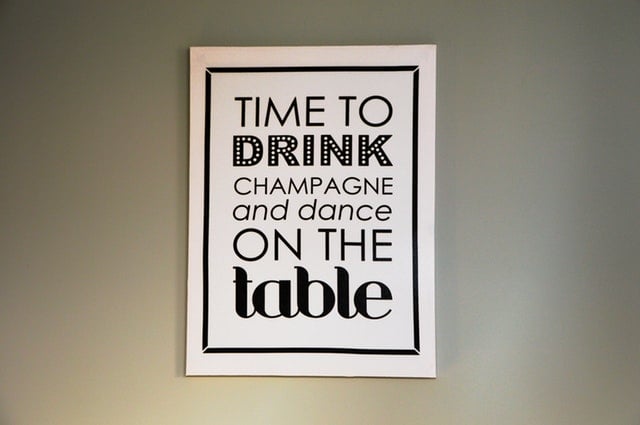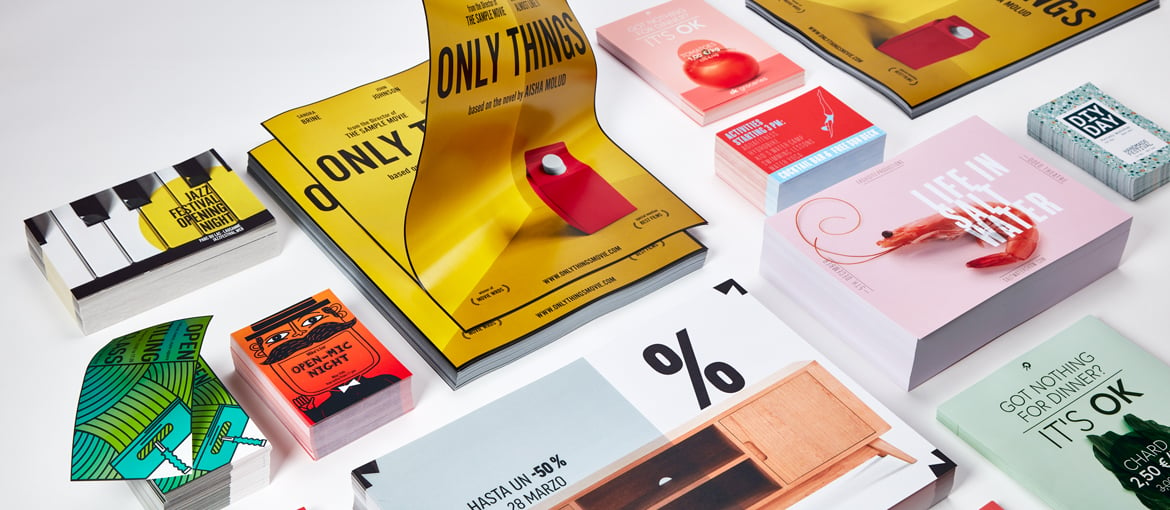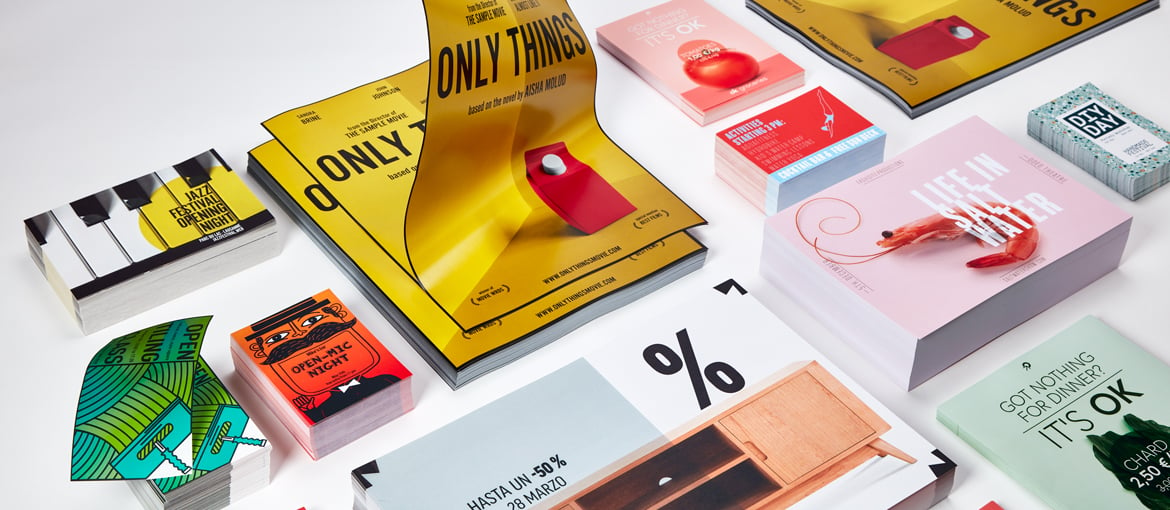Table of Contents
Offline marketing is defined as any strategy aimed at promoting products or services with tools that don’t use digital technology. Examples include paper materials like leaflets, flyers, letters, magazine and newspaper advertisements, catalogues and posters, as well as live events and radio or television ads.
While it’s fair to say that with the advent of digital communications the key to a successful advertising campaign is a cross-media strategy that mixes online tools with more traditional ones, it’s also true that analogue media is at times truly irreplaceable and will never go out of fashion.
Offline marketing is particularly useful for local businesses: firms in the hospitality and entertainment sector, shops, gyms and beauty salons that want to raise their profile at a local level to grow their customer base. In this article, we’ll look at the main advantages of analogue marketing, and how to use it for your own communication campaigns.
1.Emotional impact
The emotional reaction to a poster or backlit display can be much stronger than that generated by an online banner ad or webpage. Small-format media has a role to play too. A paper catalogue can capture and hold your customers’ attention, offering them a genuine, compelling sensorial experience stimulated by the smell of cellulose, the feel of the paper and the sight of high-definition images in vivid colour.
2.Versatility
Unlike digital marketing, offline marketing can help cross-media communication strategies and enhance the visibility of any online campaign, directing customers to a website or social platform using flyers, different types of poster and other printed materials.

3.Tangibility
Some traditional communication tools have another undeniable advantage: they leave a tangible memory with the prospective customer. In the era of media bombardment, giving printed material to a potential customer will remind them of you at the most opportune moment for making a purchase. If, for example, you hand out a promotional flyer with a discount code valid for a month, somebody who’s interested might save it somewhere as a useful reminder, and use it when they decide to make a purchase.
Promoting a local business with offline marketing
Let’s take the example of a newly opened restaurant, and see how traditional marketing can meet the various needs of an owner getting to grips with a new venue. In fact, with a few tweaks, this advice also applies to any local business that wants to promote itself through a combination of offline and online marketing actions.
Making yourself known
The owner first needs to spread the word about their new restaurant in the area, explaining the type of cuisine it offers, the atmosphere patrons will find, and any extra services offered, like private venue hire, takeaway or delivery. This is where two of the most widely used offline marketing tools, flyers and posters, can help increase visibility. Combining online ads with posters placed at strategic spots in the area and flyers posted through letterboxes can increase the effectiveness of those initial marketing actions.

Incentivising visits
To start earning revenue immediately and avoid closing down months after opening, the restaurant needs to give its first customers a good reason for coming back to eat there. It goes without saying that the quality of the food and service will play a fundamental role in this, but a discount coupon for the next meal will help too.
Building a good reputation
Having laid the groundwork, it’s time for the owners to build on their promotional efforts and cement the restaurant’s reputation as a great venue for eating out, both by word of mouth and through a solid online presence. To help this process along, they can give satisfied customers a business card with instructions for leaving a review on the restaurant’s Facebook or TripAdvisor page.
Aiming even higher
Competition in the restaurant sector is fierce, which is why smart entrepreneurs must be able to continuously update their marketing strategy, aiming to grow and diversify their clientele. Holding themed nights, cookery classes and tastings can do this, so long as such events are properly promoted through digital media and paper materials like invitations and posters. Another good idea for broadening the clientele is to host events organised by other companies and organisations, thereby using their communication channels to raise the profile of the establishment.
And what about you? Which offline marketing strategies do you use to promote your business?

